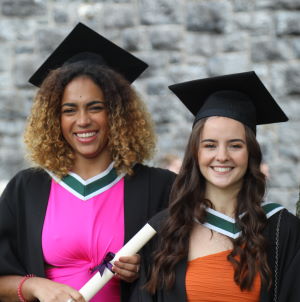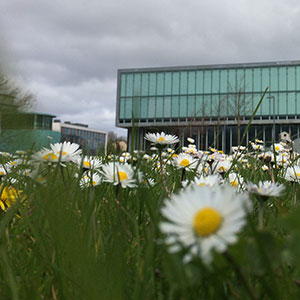-
Courses

Courses
Choosing a course is one of the most important decisions you'll ever make! View our courses and see what our students and lecturers have to say about the courses you are interested in at the links below.
-
University Life

University Life
Each year more than 4,000 choose University of Galway as their University of choice. Find out what life at University of Galway is all about here.
-
About University of Galway

About University of Galway
Since 1845, University of Galway has been sharing the highest quality teaching and research with Ireland and the world. Find out what makes our University so special – from our distinguished history to the latest news and campus developments.
-
Colleges & Schools

Colleges & Schools
University of Galway has earned international recognition as a research-led university with a commitment to top quality teaching across a range of key areas of expertise.
-
Research & Innovation

Research & Innovation
University of Galway’s vibrant research community take on some of the most pressing challenges of our times.
-
Business & Industry

Guiding Breakthrough Research at University of Galway
We explore and facilitate commercial opportunities for the research community at University of Galway, as well as facilitating industry partnership.
-
Alumni & Friends

Alumni & Friends
There are 128,000 University of Galway alumni worldwide. Stay connected to your alumni community! Join our social networks and update your details online.
-
Community Engagement

Community Engagement
At University of Galway, we believe that the best learning takes place when you apply what you learn in a real world context. That's why many of our courses include work placements or community projects.
May CÚRAM and B. Braun collaborate on simulated vascular access research
CÚRAM and B. Braun collaborate on simulated vascular access research
A research collaboration is to deploy cutting-edge simulation technologies to redefine best practices training and innovation for vascular access – the process of inserting a small tube or catheter into a vein to administer medication, fluids or take blood.
The project involves CÚRAM - the Research Ireland Centre for Medical Devices at University of Galway - and B. Braun, a global leader in medical technology.
It leverages B. Braun’s expertise in medical device development and University of Galway’s leadership in clinical simulation research to deliver evidence-based advancements in vascular access training.
Known as the SIMETRIC project (Simulation and Imaging Methods for Eye Tracking and Recording Intravenous Catheter Insertion), it is harnessing cutting-edge simulation technologies to enhance clinical protocols, ensuring safer and more effective patient care.
The initiative integrates eye-tracking systems, high-resolution video, wearable devices and motion analysis tools to assess and refine clinician performance in real-time.
This level of precision training is expected to significantly enhance competency, safety, and patient care standards.
The study, led by Dr Peter Carr, CÚRAM Funded Investigator and Associate Professor at the School of Nursing and Midwifery, University of Galway, will evaluate how simulation-based training can enhance clinician performance in ultrasound-guided long peripheral catheters.
The project will assess clinicians using three types of ultrasound-guided long peripheral catheters, including an innovative device from B. Braun´s long peripheral catheter (Deep Access) range.
Dr Carr said: “Strong partnerships drive real change in healthcare. By combining clinical expertise, cutting-edge technology and industry collaboration, we are shaping the future of vascular access training and device innovation.”
The SIMETRIC project highlights the importance of interdisciplinary collaboration, bringing together nurses, vascular access specialists, biomedical engineers and researchers.
B. Braun said: “At B. Braun, we firmly believe that industry-academic-clinical collaboration is essential for advancing healthcare innovation and improving patient outcomes. By fostering strong partnerships between these sectors, we can leverage diverse expertise, drive groundbreaking research and develop cutting-edge medical solutions. Guided by our vision to protect and improve the health of people around the world, we are committed to collaborative efforts that enhance the quality of care and ensure a healthier future for all.”
This partnership aligns with B. Braun’s commitment to advancing healthcare through innovation, creating new opportunities to collaborate with frontline clinicians and academic experts to develop smarter training solutions and cutting-edge medical devices.
Dr Carr said: “This project will aim to ensure that the new device is underpinned by robust evidence before it can be adopted in a clinical setting. We also want to demonstrate how technology can be leveraged by clinical academics to provide training simulation that leads to improved clinical and patient care. Nurses and vascular access specialists play a pivotal role in this study and their clinical expertise is invaluable in the development and evaluation of new technologies.”
Vascular access is considered a routine yet high-risk procedure in healthcare. Problems can arise from improper catheter insertion and ensuring healthcare workers have the highest level of skill, precision, and real-time feedback is critical for improving patient outcomes.
In response to growing demand from clinical partners, University of Galway is launching three new micro-credential modules based on the project’s findings. These courses will focus on ultrasound-guided cannulation and advanced vascular access techniques, supporting the increasing adoption of ultrasound-guided long peripheral catheters across a wider range of patient groups.
The outcomes of SIMETRIC will contribute to academic training, real-world clinical applications, and the future of vascular access education. By investing in collaborative research and professional development, the University of Galway and B. Braun are setting new benchmarks for innovation in medical training and patient care.
Ends















